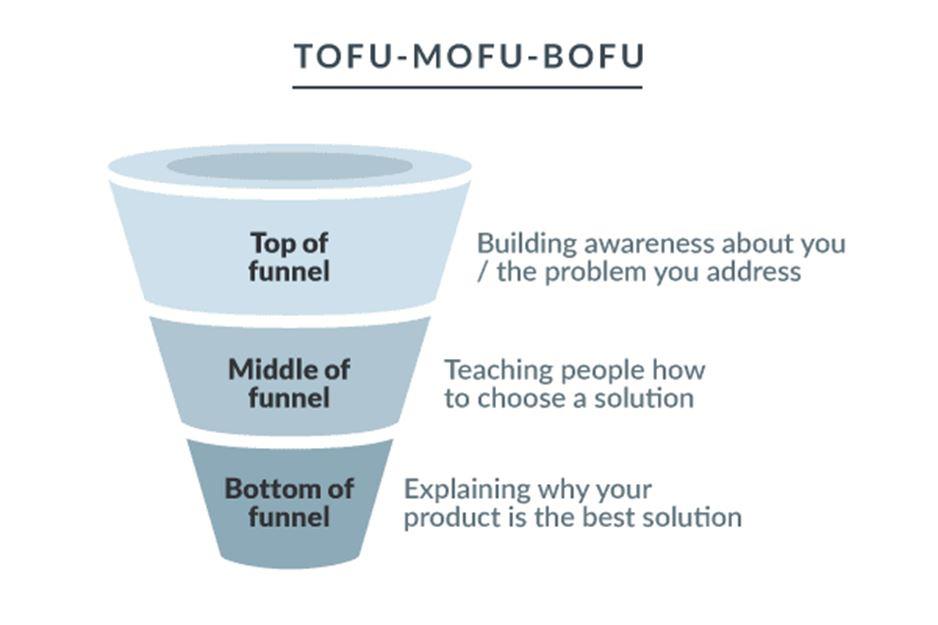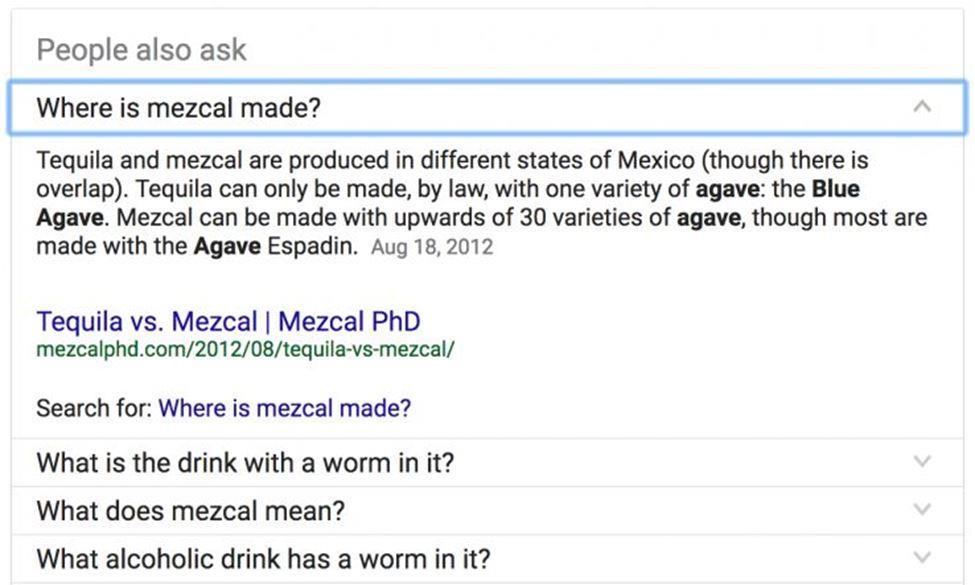When you first started investing in SEO, you had one primary goal: to increase your brand’s visibility, by making sure that your website would pop up high on the SERPs when users searched for certain answers, products, or services.
But, what about when these users don’t know exactly what they’re looking for?
What about when they’re still doing preliminary research?
For someone new to SEO, knowing which approach to take and which keywords to use in cases like these can be tricky.
However, the answer to this issue isn’t as difficult as it might seem: all you need to do is base your SEO strategy on user intent, or the sales funnel, making sure to cover all the different stages in which a potential customer might be in the buyer’s cycle.
Wondering how you can do that?
We got you – keep reading as we go through some essential tips on how to balance your SEO strategies with the sales funnel!

Sales Funnel at a Glance
Before you start thinking about how to optimize your website based on a sales funnel, you need to have a good grasp of what this funnel is.
Essentially, a sales funnel is a visual representation of a buyer’s cycle or, in other words, of their step-by-step journey towards completing a purchase. The funnel is composed of three main stages:
- Top of the funnel (ToFu): Lead generation
This is the initial phase of the buyer’s cycle when consumers realize they are facing a certain problem, but they’re not sure what exactly this problem entails, let alone how they could solve it.
For businesses, this is the stage when they can generate leads and educate them about the problem and possible solutions.
- Middle of the funnel (MoFu): Lead nurturing
The middle stage of the funnel is when consumers are aware of what the challenge that they’re facing is, so they are ready to start looking for different solutions.
For businesses, this is when they can further nurture the relationships with their potential customers by providing them with the answers they need.
- Bottom of the funnel (BoFu): Customer acquisition
Finally, the bottom of the sales funnel is when consumers know how they can overcome their problem, so they begin searching for the vendor that can provide them with what they need.
For businesses, this is the phase when they can promote their products or services.
Optimizing for the Bottom of the Sales Funnel
Most business owners focus their efforts on the BoFu and optimizing for this stage is, indeed, the most straightforward of the three.
Users are already perfectly aware not only of what their problem is but of which solutions would help them solve it. The only thing they don’t know yet is which vendor to go for, so your mission is simple: to introduce your business and convince them that it is the right choice.
As an example, if a user searches for “sushi restaurants near me”, it’s clear that they’re looking for a sushi restaurant in their area. As a sushi restaurant owner, when optimizing for the BoFu, you’ll want to use keywords like “sushi near me”, “sushi restaurant near me” or “sushi restaurant in [city]”.
Additionally, you could (and should) use keyword modifiers that would make your business sound even more appealing, such as “offer”, “cheap”, “sale, “discount”, or “nearest”.
Easy enough, right?
Businesses know what they sell and they fill their website with keywords that describe their products or services, which makes this type of SEO quite intuitive.
However, without having a good grasp of commercial intent, your efforts to optimize for the BoFu might not lead to the results you were hoping for.
In other words, when optimizing for customer acquisition, you need to make sure that you’re working on the right pages, and those are your product or service pages.
Think about it: if optimize a blog post with BoFu keywords, you’ll be working on a page that is meant to educate and not to sell. Given that users on this final stage of the buyer’s cycle are ready to make a purchase decision, it’s easy to understand why this doesn’t make much sense.
Instead, you should ensure that your sales pages, those that provide users with the specific solution they were looking for with their Google search where they can easily sign up to your service or order your product, are the ones ranking.

3 BoFu SEO Tips
- Keep the steps to convert at a minimum
Nowadays, no one has time to fill in endless forms, especially when they’re about to spend money. I mean, who hasn’t given up on an online purchase because it was just too much work? Make sure your forms are effective and easy to fill out so that consumers reach the finish line of the buyer’s cycle.
- Answer FAQs
Including a brief FAQ section on each product or service page is a smart idea for two reasons. One, because you can use it as an opportunity to convince any users who aren’t 100% sold on your offer; and two, because you can include a few more BoFu keywords to help your rankings.
- Include testimonials
Adding testimonials to sales pages shows users that your products or services are high-quality, as many previous customers are satisfied with them. Considering that 91% of people regularly check online reviews, there’s no doubt that this is a powerful move.
Optimizing for the Middle of the Sales Funnel
As mentioned before, MoFu refers to the stage when users know they have a problem but are still trying to educate themselves on how exactly they can solve it, by going through and evaluating all possible solutions.
This means that consumers are either:
a) Looking at products or services that your business offers,
or
b) Looking at alternatives that you don’t necessarily have in your store.
In terms of SEO, this means that things get a little bit more complex. Instead of focusing on the sales part, you’ll want to provide users with relevant content and, as such, the keywords and search terms you’ll be optimizing for will be things like “How to…”, “What’s the best way to…”, “X tips for..”, and “In-Depth Guide to…”.
As an example, let’s say a user is looking for a way to write a lease contract. This tells us that they want to do it themselves, either by using some sort of software or by looking at templates.
If you own a contract management tool and one of its features is legal document creation, you can create a content page that teaches people how to write a lease contract and, this way, help the user find your company.
So, your SEO goals in this stage will be to educate users on their question and on why they may want to consider your style of services or products.
This means that you won’t necessarily be trying to optimize a sales page but, instead, you’ll be focusing on whitepapers, PDF guides, blog posts, and others alike.
By capturing users when they are still trying to learn, you have the opportunity to provide them with valuable, relevant information and, as a consequence, gain their trust. This will, of course, reflect on the bottom of your sales funnel, as by then, you’ll most likely have become a top-of-mind brand.
Many business owners put most of their efforts into selling, and not educating, and that’s why MoFu optimization can be trickier to grasp.
The trick is simple: to publish (and regularly update) a library of content with pieces that are relevant to your potential customers, and to simultaneously work on link building and content strategies.
3 MoFu SEO Tips
- End the content with a CTA
Let’s say a user reads one of your articles and, by the end, they’re convinced that your brand is the right fit for them. That’s an opportunity you simply cannot miss! As such, it’s pivotal that you tell them exactly where they can head if they want to learn more about a certain service or product of yours, by adding a CTA to a sales or contact page.
- Make it interactive
Blog posts and white papers are great but sometimes people don’t have the time (or energy) to read them until the end. The solution? Interactive content. Two great ideas are quizzes and videos, but you can use your imagination as you wish. Just remember to optimize the page with MoFu keywords.
- Analyze where your organic leads came from
By monitoring where in your websites your organic leads are coming from, you can easily understand the types of content that tend to convince them and invest more in those.
Optimizing for the Top of the Sales Funnel
The ToFu refers to the stage where users know there is a problem, but don’t know how to define it yet.
They have basic questions – usually, the 5’s type of questions anyone unfamiliar with a topic has – and, as such, the ToFu search terms are much more generalized: “What is…”, “When…”, “Why”, and others of the same kind.
Going back to the lease contract example, if the person was to become a landlord for the first time, they could search for something less specific, such as “lease contract”.
Although there is some commercial intent behind this search, this user is primarily trying to acquire general information, which is why you would want to try and rank for a top-level keyword term.
When working on ToFu SEO, you’ll quickly realize that the higher up the funnel you go, the fiercer your competition will be.
You might even find yourself trying to outrank giants like Wikipedia, which sounds impossible but is all about trying to rank a body of knowledge.
A perfect example of this is Moz, the SEO software content, which has built an entire strategy around answering basic questions like “What is SEO?” or “What is link building?” and that has become one of the best-ranked websites when it comes to the fundamentals of SEO.
For your company, optimizing for ToFu will revolve around creating an extensive library that provides users with relevant content and educational materials. Ultimately, this will lead to lead nurturing and, over time, to customer acquisition.
As long as you know how to deal with the high competition that comes with ToFu SEO, either by developing some level of thought leadership or by engaging in digital PR to drive links back to your website, you’ll be able to capture users on the initial phase of the buyer’s cycle.

3 ToFu SEO Tips
- Find your audience’s FAQs
When creating content to optimize for the ToFu, you’ll want to answer questions that someone who isn’t familiar with your industry might have. Use tools like Buzzsumo and go on websites like Quora for some inspiration.
- Remember to add internal links
One piece of content will probably not be enough to convince a new visitor to make a purchase, but they might be interested in reading more about your brand. As such, remember to add internal links to relevant pages (perhaps MoFu pages).
- Promote your ToFu content on social media
Nowadays, it’s common for people to find new brands on Facebook, Instagram, or Twitter, so it’s always a good idea to promote your content there and further improve your visibility.
The Connection Between SEO and the Sales Funnel
Now that you’re familiar with the different stages of the sales funnel, it’s easy to understand how optimizing your website for each can take your SEO strategy to a whole new level.
To recap: if you want to focus on the bottom of the funnel, you’ll need to promote your product or service pages, and you can do so by creating content centered around them, to help these pages get ranked higher and higher.
If, on the contrary, you want to optimize for the middle and top of the funnel, you’ll be focusing your SEO on a larger scale, as your primary goal will be to provide valuable information to users who aren’t ready to make a purchase decision just yet.
The main mistake you want to avoid is to underestimate the implications that your keyword choices and SEO decisions have on the sales funnel.
Make sure the keywords you choose are aligned with the user intent and with the area of the sales funnel you want to focus on, and you’ll be able not only to be successful in your SEO strategies but, even more importantly, to achieve your bottom-line business goals.